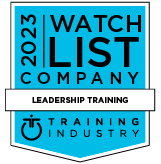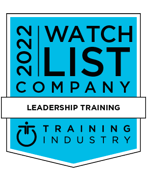End of Year Reviews: A Leader’s Guide to Team Assessment

Contents
‘Tis the season… for the dreaded end of year reviews. Except they shouldn’t be dreaded.
End of year reviews are a valuable and essential tool for both employees and employers to foster growth, improve productivity, and ensure alignment with organizational goals.
But most leadership review strategies miss the mark. Only 14% of employees strongly agree that the performance reviews they receive inspire them (Gallup).
This year, don’t simply re-hash the same old conversation. Throw that approach in the trash, where it belongs. Here’s how to prepare for an end of year review that kicks off the new year on the best note yet.
The Purpose of End of Year Reviews
Benefits of an Annual Team Assessment
What defines a high performing team? Continuous improvement. The best teams aren’t grown overnight. That growth requires careful attention from leaders and a solid foundation.
As a manager, you’re not only responsible for guiding your teams towards success but also for nurturing individual growth and development. Learning how to do an end of year review plays a pivotal role in achieving both.
Team assessments provide a structured opportunity to learn how things really are at your company. To gain insight into team dynamics, understand how happy, safe and respected employees feel, and how they feel about leaders, understand goals, and define success. Understanding what’s brewing inside your teams’ heads is the key to fostering a deeper understanding of strengths and areas for improvement.
Higher performance simply comes from leaders and teams doing more of what is working, and less of what is not. We can’t assume either, as to know is not to assume. So, these assessments should take out the assumptions and give data for improvement and growth.
Setting the Right Tone for Constructive Reviews
You definitely don’t want your end of year reviews to feel stiff and awkward. They should feel natural, but still be comprehensive and provide value. So, learning how to prepare for an end of year review involves structure and careful planning:
- Schedule it in advance: Give everyone involved ample time to prepare and make sure there's no last-minute anxiety.
- Create a safe space: Cultivating an atmosphere of trust, respect, empathy, and collaboration is essential for a productive end of year review. Emphasize that this is a two-way discussion, not a one-way critique, and encourage employees to share their thoughts, concerns, and aspirations.
- Gather information: Don’t go in fixating on that one event. Look at performance metrics, feedback from colleagues, and employee self-assessments, for a more informed discussion and to see the progress the employee has made over time.
- Don’t lump employees together: Each person and their performance is unique, so focus on that diversity and the human in front of you.
- Create an agenda: Share key themes in advance, so employees don’t feel ambushed on the day. Make them feel heard and understood by asking if there’s anything they’d like to discuss, and use their insights and your own to create an agenda, to share ahead of the team assessment.
Preparing for Year-End Performance Reviews
Gathering and Analyzing Performance Data
This is when leaders need to put on their detective hats, to interpret employee performance evaluations, team performance metrics, identify patterns, and draw meaningful insights.
Leadership review strategies need a holistic view of people’s contributions to the team. KPIs, project outcomes, feedback from clients, peers and supervisors, and also self-assessments. Ask people to reflect on their accomplishments and challenges, conduct an employee performance evaluation of their very own, and note their goals for the year ahead.
Remember: leaders should also reflect on their own successes and failures too. It can feel uncomfortable, but it’s an essential element of an effective year-end performance review.
Incorporating 360-Degree Feedback
Annual team assessments need to be complemented by 1:1s and 360-degree feedback throughout the year. Otherwise, your employees could be feeling left in the dark for the other 364 days.
360-degree feedback is like taking X-rays from all angles. It provides fresh and honest insight from peers, managers, direct reports, and clients, to help understand where and why performance is lacking, improve teamwork and accountability, and foster self-awareness. Rounded input helps to break down the natural, inherent biases we all have.
Conduct a Cultural Survey, too. It will:
- Uncover blind spots limiting employees’ growth.
- Highlight areas of good and bad practice and behavior, providing insight into what people should Stop, Start and Continue doing.
- Understand how leaders answer their team’s needs and shape employee experiences.
- Develop leadership review strategies and ensure a strong link between teams and corporate goals.
- Develop culture and track progress.
Conducting Effective Year-End Reviews
Best Practices for Delivering Feedback
85% of employees would consider quitting if they felt they received an unfair year-end performance review (Reflektive).
Words carry weight. Always set an intention before you open your mouth. Is the purpose to instruct, build, or encourage?
7 powerful phrases to use in one-on-ones:
- I am grateful for your… Name qualities that align with organizational values – passion, determination, vision, empathy, openness. Tell people you respect them.
- You aren’t helping yourself when… Teach people to avoid self-defeating behaviors.
- When I see you at your best, I see you…
- I notice you (something good). Keep it up.
- You belong here.
- You earned this opportunity.
- I want you beside me during this challenge.
Annual review best practices:
- Focus on empathy: Suspend judgement, and use clear, respectful language to facilitate open communication.
- Practice active listening: Seek to understand their perspective. Show respect, don’t interrupt, ask thoughtful questions, and offer support to help them grow.
- Focus on behavior:Swap character judgements for behavior insights. Instead of saying, “You always miss deadlines,” try saying, “I wonder if you are saying ‘yes’ to too much.” Remember your job is to give them perspective on actions and their impact.
- Don’t use the "Feedback Sandwich":Be kind and honest, not nice and fluffy! Keep positive and constructive feedback separate. When providing constructive feedback ensure you give specific examples, and end with how you would improve. This approach ensures the data doesn’t get lost and always ends of positive note.
- Ask for feedback as a leader: Stepping into the spotlight can be a real ‘gulp’ moment but being receptive sets a positive example for teams, and strengthens trust in leaders. Ditch the ego. Negative feedback should always be approached with an open mind and a willingness to listen and learn.
- Beware the biases: Comparing employees to peers can lead to unfair “contrast bias”. The “halo bias” leads to an overly positive perception because of strengths in one or two areas. And the “horns bias” leads to the opposite. With “recency bias”, leaders overemphasize recent events. It’s crucial to be aware of these as a leader.
A culture of regular feedback makes sure that no surprises crash the party at the next end of year reviews.
Facilitating Open and Honest Conversations
Remember: year-end performance reviews should be a two-way street, and an open-ended discussion. Start, Stop and Continue conversations.
It’s up to leaders to create a comfortable and non-judgemental space where employees feel encouraged to share their perspectives and challenges. We’re all just human beings living complicated lives, so empathy and active listening are key to fostering a culture of transparency and mutual understanding.
10 powerful questions to use in one-on-one year-end performance reviews:
- How are you feeling?
- On a scale of 1 – 10, what level of challenge are you at? Show interest in wellbeing.
- What are you learning?
- What do you want to do differently moving forward?
- What’s working?
- How can you take yourself to the next level?
- What would you like to ask?
- What should I be asking?
- I wonder if ___ holds you back?
- How is your confidence level? What could we do to raise your confidence?
The #1 rule of leadership communication? Only open your mouth to make something better. Words can change perspective. A person will shift, for example, from defeat to opportunity when someone asks, “What are you learning?” Leaders will find themselves with a much more insightful team assessments.
Encourage conversations to keep going, by letting employees know that your door is always open to them if they have any questions, concerns or feedback.
Balancing Achievements and Growth Areas
If leaders bombard an employee with negativity and criticism from the moment they walk in, employees will leave feeling uncomfortable, undervalued, and probably personally attacked.
Look at both sides of the coin, to keep employees feeling valued and motivated. What were the highlights of the year? What did they knock out of the park? How did that ripple throughout the organization?
Transform hindsight into foresight. Turn negative feedback into a roadmap for improvement and development. When leaders become growth mindset architects, they inspire employees to do the same; to swap discomfort for self-reflection and commit to a new year that blows the last one out of the water.
Setting Goals and Expectations for the Coming Year
Collaborative Goal Setting with Your Team
Why involve employees in goal setting during end of year reviews? Not just to tap into diverse perspectives, but also ensure that objectives are the Goldilocks of goals – realistic, challenging, and meaningful to each person. It’s a collaborative approach that promotes a sense of ownership and empowerment.
Ask employees about their aspirations and identify areas where they can contribute most effectively in the team. Whether there’s already a fire in them, or it’s down to embers by December, it’s a way to get it burning brighter. It enhances communication and a sense of belonging, so teams feel more engaged and develop a deeper connection to their work.
And be clear about how the leader is going to help teams reach those goals, to set the stage for a successful and fulfilling year ahead. Schedule regular check-ins to review progress, provide ongoing feedback and encouragement, and help everyone stay on track.
Aligning Individual Goals with Organizational Objectives and Purpose
So, you had a great year. You worked on multiple things. But what was the impact on the business or overall team strategy?
Together, leaders and employees need to create a shared vision for the future. End of year reviews are the time to discuss how to connect personal goals and purpose with the broader mission of the organization. It means that every person’s efforts contribute meaningfully to overarching goals. It fosters a sense of purpose and collective achievement.
By establishing this connection, employees are more likely to feel motivated, engaged, and connected to the larger vision of the company. This alignment not only enhances the performance of individuals, but also reinforces a shared commitment to the mission. Like lighting a fuse, it drives success all the way through.
Key Takeaways
End of year reviews shouldn’t feel like being given a lump of coal before Christmas. When you know how to prepare for an end of year review, and annual review best practices, they are a chance to kick off the new year on a positive note, and get people excited to grow and develop.
We carried out a cultural diagnostic for a major financial services organization, where it was clear there was a lack of psychological safety on teams to be able to speak up about issues at hand. Our team assessments revealed they had a hard time understanding and empathizing with each other. Now, there is an open dialogue, openness to collaboration, more empathy and conversation, easing rifts, and growing trust.
Get in touch to find out more about applying CARE to team assessments, to find out what’s working, what’s not, and how to get everyone on a better path for the year ahead.
FAQs
What are the key objectives of conducting end of year reviews?
The end-of-year reviews serve as a strategic compass, guiding teams through a reflective journey to celebrate triumphs, learn from challenges, fuel momentum, and illuminate the path forward, for an even more triumphant year ahead.
How can leaders prepare effectively for team assessments?
Assess employee performance evaluations, 360-degree feedback, and team performance metrics, to gain a holistic understanding of each team member’s contributions, strengths and areas for improvement. Leaders should throw their whole self into learning how to deliver constructive feedback, to create an environment where every team member can shine.
What are some best practices for delivering constructive feedback?
Be empathetic, practice active listening, ask thoughtful questions, and focus on behavior, not personality traits. Use the feedback sandwich, and always frame areas needing improvement as empowering opportunities for growth. Be aware of biases and ask for feedback on leadership too!
Insights

Subscribe to Our Monthly Newsletter!
For managers and talent professionals who truly believe in putting people first, the CARE to Win blog is your gateway to the latest insights on human-centric leadership. Join us as we champion the people first movement.
Need some time apart? Are we emailing you too often? Just give us your feedback, and we promise we’ll respond. We really do care. And if it’s still too much, just unsubscribe. It’s cool.


